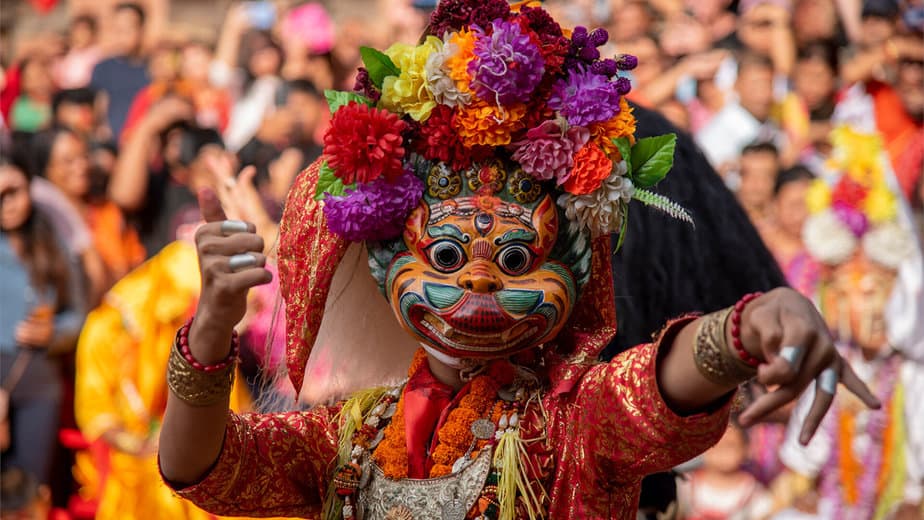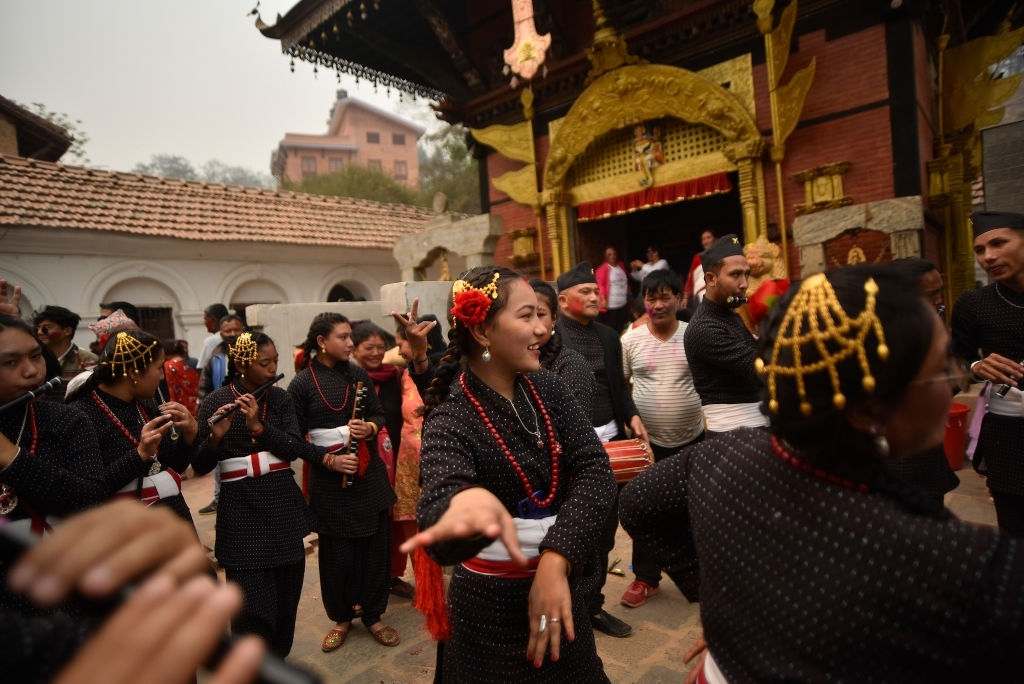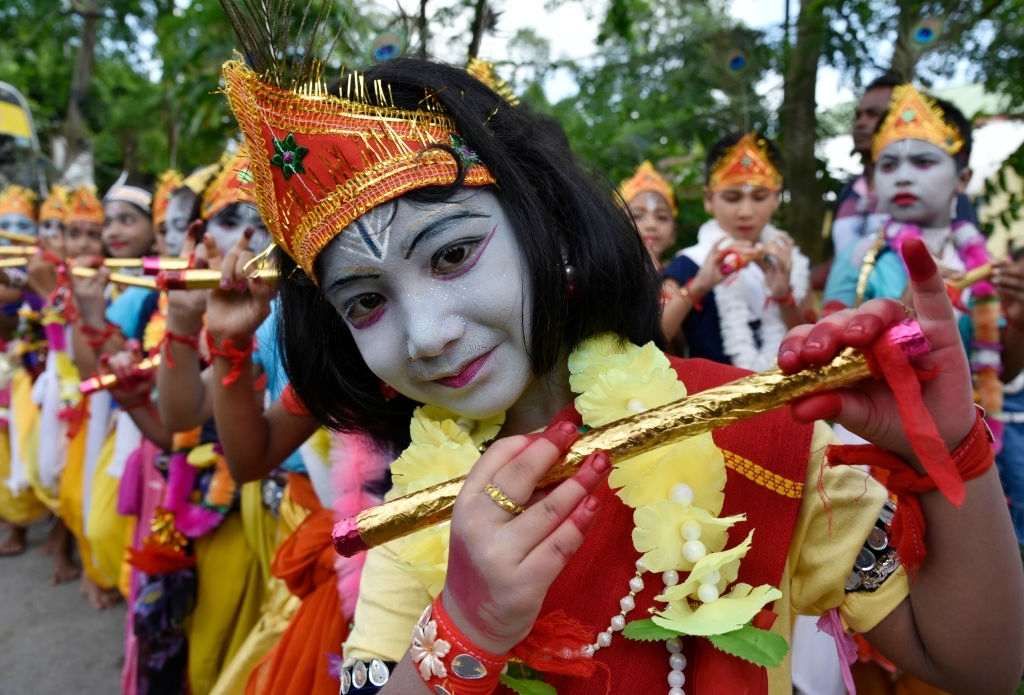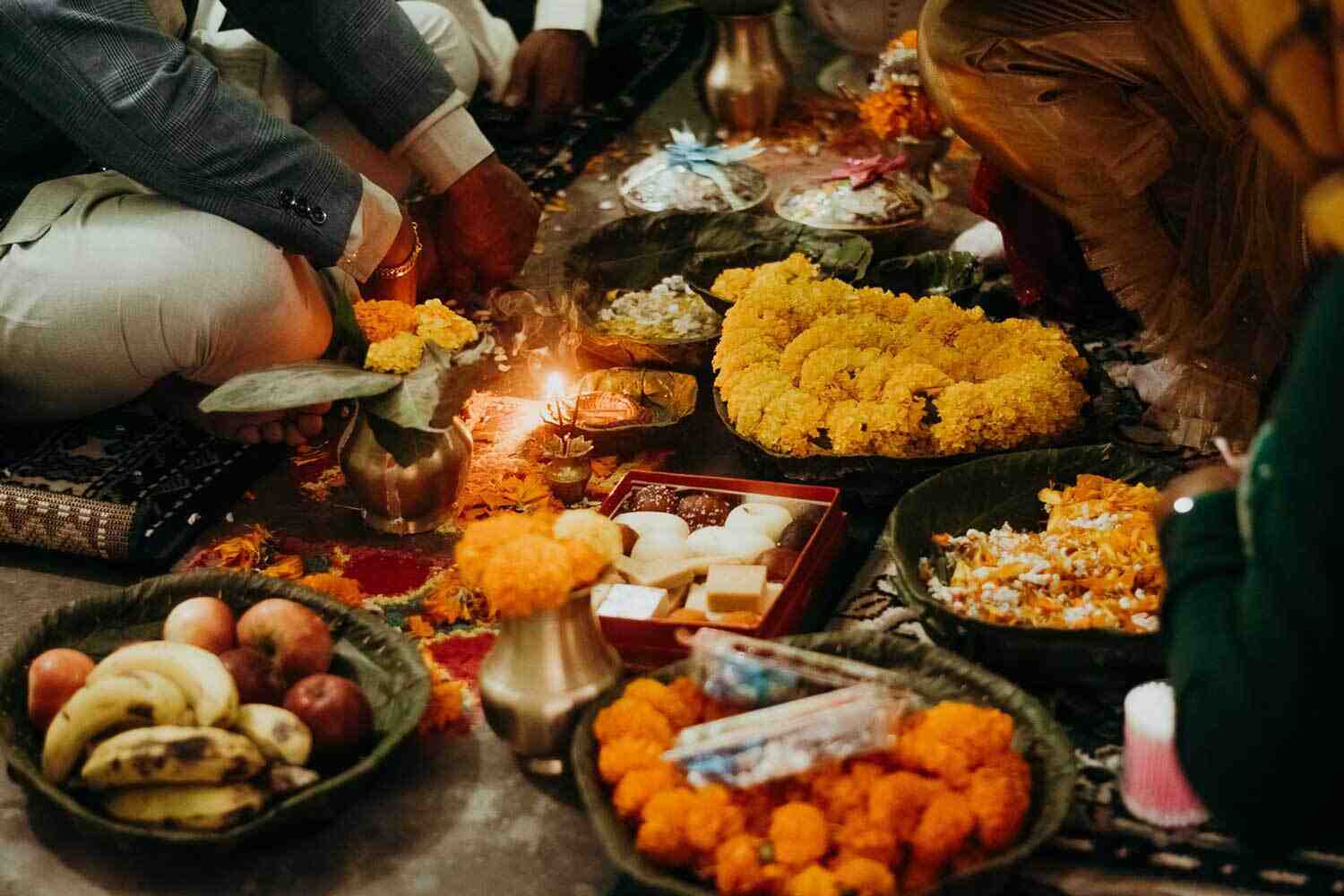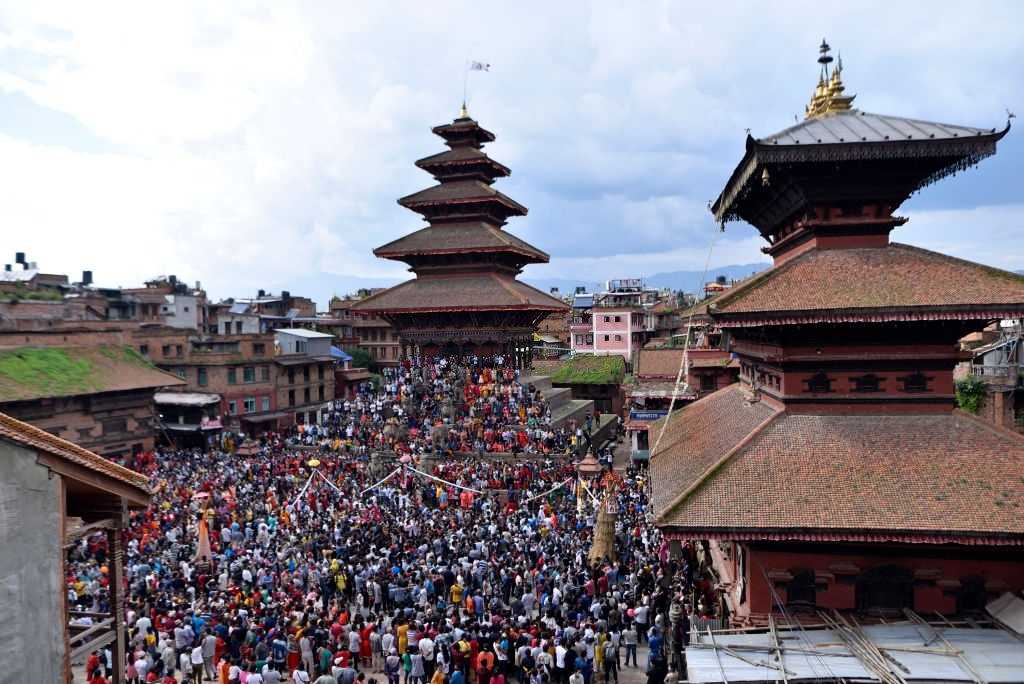The ethnicity of the Newari people is a combination of Indo-Aryan and Tibeto-Burman. The Indo-Aryan groups arrived from India and blended seamlessly into the Tibeto-Burman culture. Although the original language and culture survived, Hinduism and the caste system were brought over by the Indo-Aryans. Newars are now Nepal's sixth most populous ethnic group. The Kathmandu Valley is home to the Newar clan. The main areas are Kathmandu, Patan, and Bhaktapur, but they can now be found all over Nepal in modern times. Palpa, Bandipur, and Butwal are three other major communities outside of Kathmandu.
Newari Food
1) SamayBaji:
During Newari festivals and feasts, SamayBaji is a common dish. It's not a popular meal, but it's worth trying if you want to learn about the Newari culture. It's a plate of food that includes bara (a form of bread), beaten rice, potato curry, soybeans, boiled egg, and typically a very spicy meat (similar to dal baht) (often buffalo).
2) HakuChoila:
Grilled buffalo meat is known as HakuChoila. You should also try chicken, which is a personal favorite of mine. This is classified as a snack, but it still tastes like a complete meal to me. It's hot and spicy, and it's typically served with beaten rice.
3) Yomari:
Yomari is a sweet dumpling with a sweet filling. I haven't had the opportunity to try one yet, but it's now on my list of things to buy when I return to Kathmandu. I'd seen them on menus before but had no idea what they were. This can be used as a dessert or a snack.
4) Chatamari:
Chatamari is the Newari equivalent of pizza. It reminds me a little of a savory crepe. It's a fine appetizer to order and share with mates. It is made up of a thin rice crepe with a variety of toppings ranging from vegetables to minced meat.
5) Bara:
Bara is a savory bread that is similar to a Nepalese pancake. It's made with lentil flour, so it's a healthy choice. Bara comes in a variety of flavors, including egg bara, chicken bara, and buffalo bara. It's great as a side dish or snack, or for dipping in curries.
Newari Language
Newar or Newari, also known as Nepal Bhasa, is a Sino-Tibetan language spoken by the Newar people, who are the indigenous inhabitants of Nepal Mandala, which includes the Kathmandu Valley and surrounding areas. Even though "Nepal Bhasa" literally means "Nepalese language," it is distinct from Nepali, the country's actual official language. Even though the two languages belong to separate language families (Sino-Tibetan and Indo-European, respectively), centuries of contact have resulted in a large vocabulary overlap. Both languages are recognized as official in the Kathmandu Metropolitan City. From the 14th to the late 18th century, Nepal's administrative language was Newar. Newar people were suppressed by the government from the early twentieth century until democratization. The number of Newar speakers in the Kathmandu Valley fell from 75% to 44% between 1952 and 1991, and Newar culture and language are now endangered. UNESCO has classified the language as "definitely endangered."
The popularity of Newar culture
Newars have established a sophisticated urban civilization and division of labor not seen elsewhere in the Himalayan foothills. Newars have maintained their long-standing customs and rituals, and they take pride in being the real custodians of Nepal's faith, history, and civilization. Newars have made significant contributions to culture, art, and literature, as well as commerce, agriculture, and cuisine. According to the UNDP's annual Human Development Index, they consistently rank as Nepal's most economically, politically, and socially advanced group. With 1,321,933 Newars across Nepal, they are the country's sixth-largest ethnicity/community, according to the 2011 census.
The former Newar kingdom of the Nepal Mandala was centered on the Kathmandu Valley and its environs. Unlike other Nepalese ethnic or caste communities, the Newars are considered a relict nation population with a relict identity originating from a previously-existing ethnically diverse polity. As the descendants of the diverse group of people who have lived in Nepal Mandala since prehistoric times, the Newar community within it consists of various strains of cultural, racial, caste, and religious heterogeneity.
Indo-Aryan tribes from India's Mahajanapada (i.e. Licchavis of Vajji, Kosala, and Malla (I)) who arrived at different times gradually integrated with the local population by adopting their language and customs. However, these tribes kept their Vedic culture and brought their Sanskritic languages, social structure, and Hindu religion with them, which was assimilated with local cultures and gave rise to the modern Newar civilization. With the Gorkha Kingdom's conquest of Nepal Mandala in 1768, Newar rule in Nepal Mandala came to an end.
